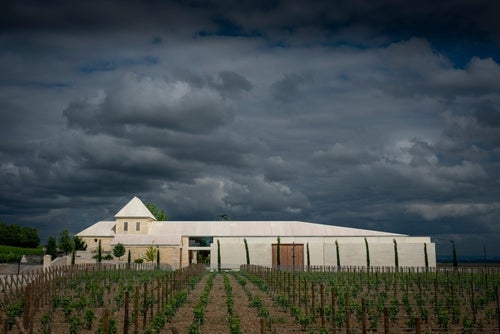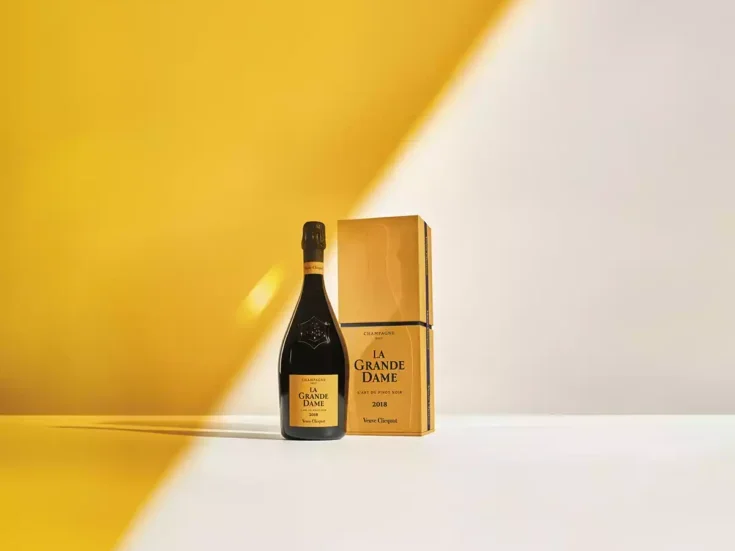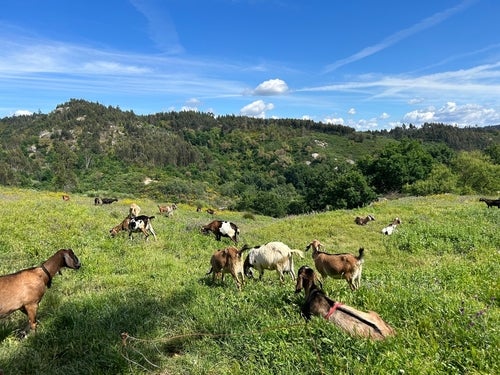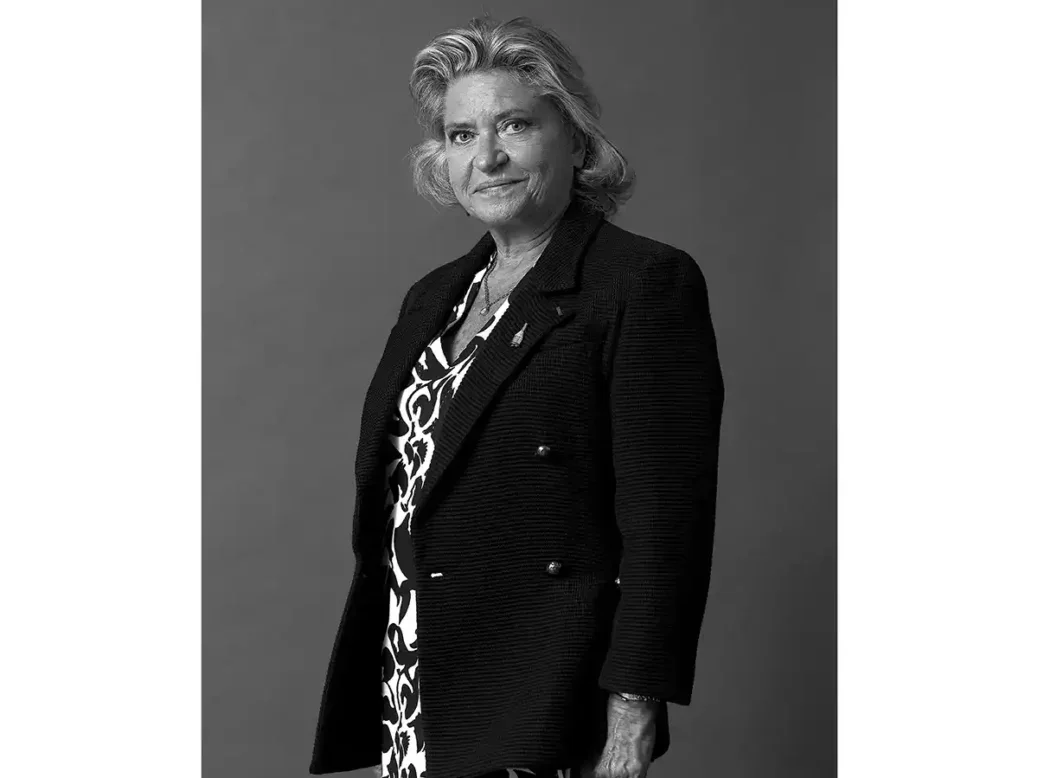
Anne Krebiehl MW reviews Duval-Leroy 2008 Femme de Champagne and Femme de Champagne Rosé de Saignée.
Le Champagne, ce n’est pas un luxe, c’est un plaisir.” As opening statements go, this was perfect: direct, succinct, and eminently true. It was made by Carol Duval-Leroy and immediately gave the measure of this diminutive but determined woman. She spoke only briefly, in heartfelt, short statements that made clear she had no intention of wasting words. “Femme,” she said about her prestige cuvée, “is what I created with my husband. I am proud that my three children work with me. I am very proud that we are still an independent, family-owned house.”
Indeed, her son Julien Duval-Leroy, also present, president of the house since his mother’s retirement, has worked with her for the past 15 years, while his brothers Charles and Louis are responsible for sales and PR respectively. The occasion was the launch of two new Champagnes—the Chardonnay-dominant 2008 Femme de Champagne and the 2008 Femme de Champagne Rosé de Saignée, a pure Pinot Noir—in a private, wood-paneled dining room at the Restaurant Trente-Trois in Paris’s leafy 8th arrondissement. It was the kick-off for what the house calls the “Femme de Champagne Experience World Tour,” where these wines are “brought together at the finest tables during exceptional meals organized all over the world.” Joyously, and apparently comme d’habitude, Carol Duval-Leroy was accompanied by her black Labrador puppy Sulfite, who, apart from a few playful barks, mostly slept peacefully under the table.
Femme de Champagne was first made in 1990 and released in 1999. When I asked Carol Duval-Leroy what the vision had been behind its creation, she was equally brief: “I wanted to make a bottle like a jewel—exceptional.” And exceptional they are, literally so. Chef de cave Sandrine Logette-Jardin explained that the house decided a number of years ago to separate the production of Femme de Champagne into undeclared vintages and so-called millésimes d’exception, which stay on lees much longer. The initial Femme de Champagne 1990 was declared a millésime d’exception, and so were the following 1995, 1996, 2002, and 2008 vintages. The Femme de Champagne wines made in 2000, 2004, 2006, 2007, 2012, and 2014 were labeled simply as Femme de Champagne Grand Cru NV and do not state their vintage year on the back label.
A tragic genesis
The tasting started with Femme de Champagne Grand Cru Brut NV in magnum from the undeclared 2004 vintage as an apéritif, which set the tone, with its slender, agile elegance. This was followed by the 1996, 2008, and 2002 Femme de Champagne, and the 2008 Femme de Champagne Rosé de Saignée —all millésimes d’exception, all served in magnum. The wines showed their gastronomic mettle and shone alongside the contemporary classics of French cuisine created by Michelin-starred chef Sébastien Sanjou: an amuse-bouche of chickpea and trout eggs, followed by spankingly fresh raw langoustine with spring vegetables, stupendously subtle red mullet with both fresh and grilled fennel, beautifully rustic yet refined roast lamb, and a dessert that can only be described as a sublimation of strawberries. For me, the 1996 wine was a highlight, with its electric nature and astonishing youthfulness, making it an excellent counterpart to the newly presented 2008—which did not come across at all like a 16-year-old wine, certainly nowhere near its height of expression. The 2008 Rosé de Saignée was perfect with the intense Maillard flavors of the pink roast lamb.
Sandrine Logette-Jardin, who has been with the house since 1991 and became cellar master in 2005, said that “2008 was born of difficulties. Flowering took place during a period of cold weather; July was very hot, and August was rainy. Frequent winds helped to dry out the humidity and produce healthy grapes, which were harvested in mid-September. It is a year of great richness and great flavor, with exceptional balance and great aging potential. It is just at the beginning of its life.” She later described the 2008 Femme de Champagne as “lacy,” and I could not agree more—it is still only on the cusp of showing any development. When Duval-Leroy had introduced her cellar master, she had again been brief, merely stating that Logette-Jardin “created wines with a lot of emotion.” It is a statement that carries more weight when you consider who made it.
It is almost impossible to write about Femme de Champagne without mentioning its tragic genesis. I debated whether I should do so here, whether it was necessary at all, but the wines seem too imbued with Carol Duval-Leroy’s exceptional spirit of determination. She lost her husband Jean-Charles in 1991, when he was just 39, leaving the 36-year-old mother of three young children to fulfill her promise to him “to take care of the business and keep it in the family.” Together, they had come up with the idea for the new prestige cuvée that was to become Femme de Champagne. What she achieved is immense—not only in keeping, enlarging, and modernizing her business, but also serving as the first-ever female president of the Association Viticole Champenoise, the governing body of an industry that often liked to wheel out its handful of historic female leaders while resisting change for the longest time. When Duval-Leroy took over the running of the family firm 33 years ago in 1991—the same year Sandrine Logette-Jardin came on board—both women were still exceptions that tested the same old rule.
Returning to the wines themselves, what showed beautifully was their consistency of style. Notwithstanding the varying vintages, they all came across with directness and immediacy, without any clutter or noise, frills or fancy, but with complete poise—just like Mme Duval-Leroy herself.
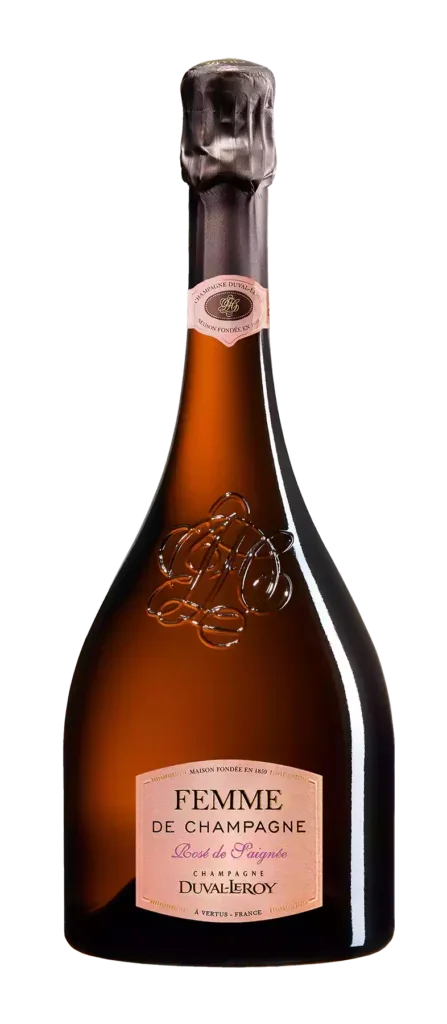
Tasting Femme de Champagne
Restaurant Trente-Trois, Paris; June 13, 2024
Femme de Champagne Grand Cru NV (12% ABV; magnum)
Based on the (undeclared) 2000 vintage, this is a blend of 95% Chardonnay and 5% Pinot Noir. 25% of the base wines were fermented and aged in barrique, and the bottle was disgorged earlier this year with a dosage of 6g/l.
This golden wine comes with the merest touch of honey on the nose, alongside a suspicion of toasted cumin and toasted baguette. Brightness, dispersed by very fine mousse, and svelteness immediately express the Chardonnay-dominant nature of the wine. Gentle notes of grilled wheat bread stay in the background on this understated yet completely lively wine, whose chief attributes are agility and tension. | 93
1996 Femme de Champagne (12% ABV; magnum)
A blend of 79% Chardonnay from Chouilly, Oger, Le Mesnil-sur-Oger, Avize, and Cramant, with 21% Pinot Noir from Bouzy and Aÿ. Just 7% of the base wines were fermented in oak, and the wine was disgorged in June 2022 with a dosage of 4g/l.
Amid the dried lemon rind on the nose, there is a faint hint of white, fresh field mushroom, but that seems to be the only hint of evolution here, before lemon-scented notes of Genoese sponge slowly emanate, understated but hinting at richness. It is only with air that some short-crust generosity breaks through. Electricity flows immediately on the taut, vivid palate, which still shines with exquisite, even luminous freshness. All is held in a statuesque, sleek structure that has something disarmingly direct and utterly unadulterated about it, finishing with great depth of chalky, mouthwatering saltiness. Wow—what a wine! | 97
2008 Femme de Champagne (12% ABV; magnum)
This is made up of 74% Chardonnay from midslope parcels in Chouilly, Le Mesnil-sur-Oger, Avize, and Cramant, with 26% Pinot Noir from Aÿ, Bouzy, and Ambonnay; disgorged in June 2023 with a dosage of 5g/l.
The initial whiff almost has something of a sea breeze about it, before green apple with overtones of chervil present an exquisitely fresh, scented nose. The palate seems to float on a cloud of exceptionally fine, exceptionally airy mousse, which gives the impression of silk-chiffon lightness. Svelteness, poise, and tension still present astonishing youthfulness and exquisite, seemingly effortless finesse. Yet there is clear direction. This wine might still be a little young, but my, does it have a future! Such purity and precision. Beautiful. | 96
2002 Femme de Champagne (12.5% ABV; magnum)
95% Chardonnay from Avize, Cramant, Oger, and Le Mesnil-sur-Oger, with 5% Pinot Noir from
Ambonnay; 20% of the base wines were fermented in oak. Disgorged in 2023, with no dosage.
Logette-Jardin noted that the “exceptionally high ripeness in 2002 resulted in concentrated, ripe grapes of exceptional quality.” It was thus decided to leave the wine with no dosage.
The nose of this golden wine is initially quite shy and takes its time to reveal both oyster shell and the subtle spice of English seed cake, which almost turns into Christmas spice as the wine warms up, and ripe Golden Delicious apple flesh followed by an ozone breeze. Bold, golden sultana on the palate is clearly framed and directed by dried lemon-peel freshness. The zero dosage reveals an exceptionally firm structure, which somehow channels the richness of the fruit in a salty, sleek direction, edged as much by saltiness as by mirabelle-skin phenolics. A bold, strait-laced, and distinctly gastronomic wine. | 94
2008 Femme de Champagne Rosé de Saignée (12% ABV; magnum)
This pure Pinot Noir, from Bouzy vines between 35 and 45 years old, was macerated for 18 hours before pressing and was disgorged in early 2024, with a dosage of 3g/l.
Blossom honey and rose-dominated potpourri appear first on the nose of this deeply colored, copper-hued wine, followed by red fruit reminiscent of ripe, juicy berry and cherry in equal measure, altogether creating a promise of richness and generosity. The palate, however, pulls all into immediate focus, with exquisite freshness and vigor, making this wine fit perfectly into this Femme de Champagne lineup, despite its undoubted concentration and vinous character. A most animating contrast between the rich, saignée “Pinot-ness” and the exquisite, cooling, chalky depth, between the generosity of the nose and the bright freshness of the palate. An utterly gastronomic wine, with a fine, creamy mousse. Bravo! | 94

